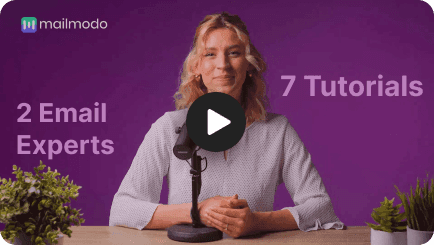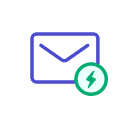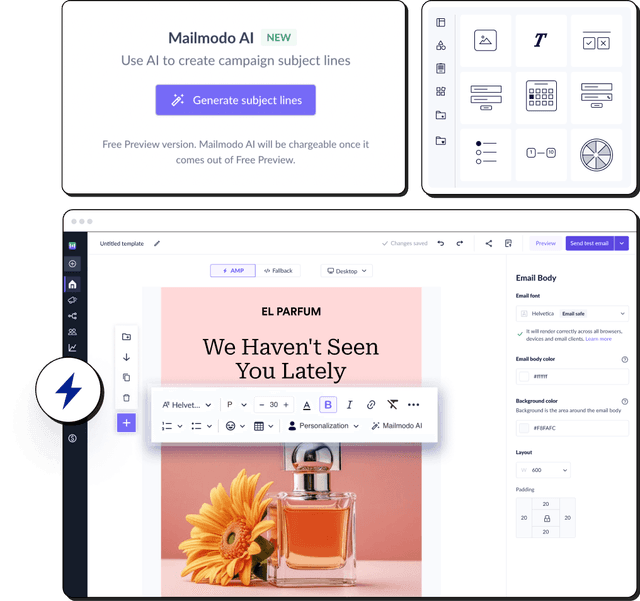Why should you start a paid newsletter?
There are several reasons why someone should create a paid email newsletter, and here are a few:
✅ It provides recurring income for content creators
Content creators or industry experts usually focus on creating a lot of free content that their audience can benefit from. But in doing so, they have made it an unsustainable business strategy for themselves as it doesn't pay the bills.
So people can provide such paid content to have a recurring revenue stream, in the long run, to supplement their livelihood and keep creating content for their audience.
Even with a few subscribers, they'll be able to earn a good amount of money and slowly expand over time. Even if you have only ten subscribers, if you charge $5 every month, you'll get $50 at the end of the month.
✅ It doesn't take too much effort to create
All you would need is a computer, internet, and a few days to build a paid newsletter set up from start to finish. And, you can put in a few hours every month to create the newsletter you are going to send that month.
It's something that you can do by yourself within a short period that can help you get a recurring income to sustain yourself while you focus on growing your personal brand or company.
✅ It helps to establish your expertise
With paid newsletters, you will most likely be sharing valuable content that showcases your expertise in the subject. So, when you share that expertise with your audience, it'll help win their trust in you and think of you as the authority for the niche.
For example, if you’re a marketer, you could send out weekly industry updates or give people little-known marketing tips.
✅ It incites you to keep your creative juices flowing
As we discussed earlier, if someone keeps creating a lot of unique and new content to earn a living, they are on their way to getting burnt out. So, if you monetize one of your content-like newsletters, you can reduce the number of content you produce and still have an income.
By reducing the number, you will have time to slow down, sharpen your creativity and focus on quality rather than quantity.
How to start a paid newsletter?
Now, after looking at the benefits of having a paid newsletter, if you want to give it a go, here are the steps you need to take to set one up.
1. Set goals and decide the purpose of your newsletter
People only spend money on things that would give some sort of value to them. So, you need to be clear about what kind of content you want to share and how it would provide them value. Figuring out the value you provide will make it easier for you to know what to create and help you stay on track.
You can decide your newsletter’s purpose by asking yourself the following questions:
By knowing your value proposition, you know what you provide to your audience and figure out how to provide your audience with the information in a comprehensive way.
When people know what exclusive content you provide, they'll know it's curated and not the same as information found online.
2. Define your target audience
After you have decided on the topic, niche, and value proposition, it's time to decide who will buy, enjoy and benefit from your newsletters. Deciding your target audience will help you properly market the newsletter and make it a thriving livelihood.
Sometimes the target audience can also influence the content of the newsletter and how to use the right copy to attract that particular audience. To find out your target audience, ask yourself the following questions:
Who would be interested in your content?
How will it enrich their knowledge or livelihood?
Are your newsletters relevant to a particular audience?
For example, if you’re a chef, it’s not the best idea to target teenagers, who don’t even know where the kitchen is. Instead, it’d be more accurate to reach out to people wanting to learn new recipes or level up their cooking game: people working from home, parents, homemakers, fellow chefs, or restaurant workers.
3. Create a schedule
Create a schedule to plan out when you will send out the newsletters and how often. It'll help you figure out how often you can create such content and send it to your subscribers, be it on a weekly or monthly basis. Just make sure you don't overdo it and get burnt out. Keep it a manageable frequency.
By having a schedule, you will have time to plan out your content accordingly and be consistent. It helps keep you accountable as your audience is expecting your newsletters.
Deciding the frequency is solely up to you, if you want to do this full time you can send out daily or weekly newsletters. But if you only want it to be a side hustle, you can send out the newsletters monthly or bimonthly.
Related guides:
A Guide to Finding the Right Email Cadence for Higher Engagements
How to Find the Best Time to Send Emails
4. Decide on your pricing model
Deciding on a pricing model can be one of the most challenging steps out of them all as you have to decide on the right amount that is appropriate for the content and enough to pay yourself fairly for your work.
The price of the newsletters will also depend on whom you send them to and how often. On average, a paid newsletter can range anywhere from $2 to $20 per month and have an annual package with good discounts.
To decide which price to set, we would recommend that you research your competitors and find out who else is in a similar niche as you. Figure out how they price their newsletter and come up with a number for your newsletter. Something that is fair for both you and your audience.
Also, we would recommend that you start off with a free newsletter at first, if you are a complete beginner. It'll help people to get familiar with your brand and later on subscribe to the paid newsletter version.
5. Create the newsletter
Now that you have done all the brainstorming work, it's time to create the actual newsletter that you are going to send out and what platform you are going to use. We recommend that you have at least one or two newsletters ready to go because you might be busy during the launch week.
As for which platform to use, it's up to you to figure out which would best fit your needs.
Here are some of the paid newsletter platforms you can look into:
6. Build a landing page
Once you create your newsletter, integrate the platform to your website and the payment system. To integrate it into your website, you need to create a landing page that you can lead people to and they can sign up from.
On this landing page, you should briefly explain what you provide in the newsletter and tell them how it will be beneficial for them. You can also, later on, add a few testimonials from your customers to showcase the credibility of your brand and the newsletters.
7. Conduct testing
You have set up all the backend stuff, it's time to see if it's working properly and there are no issues with the integration, rendering of the email, or payment.
You can try to sign up for the paid version yourself or ask a friend to sign up to check if everything is working as it should be. At this point, you can diagnose and find issues before you start promoting to your audience.
After you have completed all the backend setup and creation process of your newsletter, it's time to advertise it and get more eyes on it. Here are some ways to get the word out to people:
Promote it in your free newsletter.
Promote it in your course materials.
Add a link to your author byline.
Create a banner on your website.
Mention it on your social media.
Paid advertising.
Mention it in blog posts.
Add it to your email signature.
Personally tell your friends, colleagues, etc.
Post it on groups related to your niche.
Even if you have a killer newsletter strategy, if you fail to promote it properly, all your efforts go down the drain. So, focus on telling people about your newsletter wherever you can and find out how you can get people to sign up for it.
Examples of thriving paid newsletters
Here are some paid newsletter subscriptions launched by people that have grown steadily in the past few years.

Ben Thompson was one of the early adopters of the paid newsletter model and has created a subscription that charges $12 every month for exclusive content. He provides blog posts and daily newsletters about the analytical tech industry in his premium content.

De Correspondent is a journalism company based in the Netherlands that focuses on delivering accurate information every day to its subscribers rather than focusing on the hype of the day.
They get almost 96% of their publishers' revenue from paying subscribers who have signed up for the daily newsletter. Their memberships start at €7/month or €70/year.
Wrap up
Now, you know everything you need to know about starting and running a paid newsletter subscription campaign. It's not a walk in the park but you will get the hang of it once you start.
We can't wait to see what you come up with and hope that this article helped you understand what paid newsletters are and how to create them.











